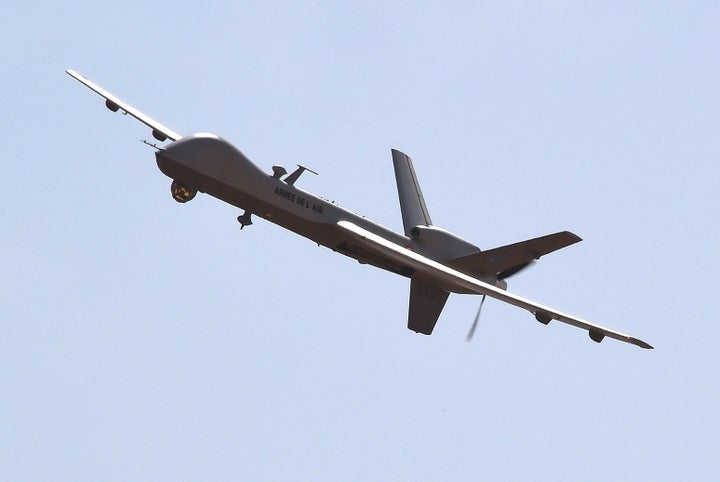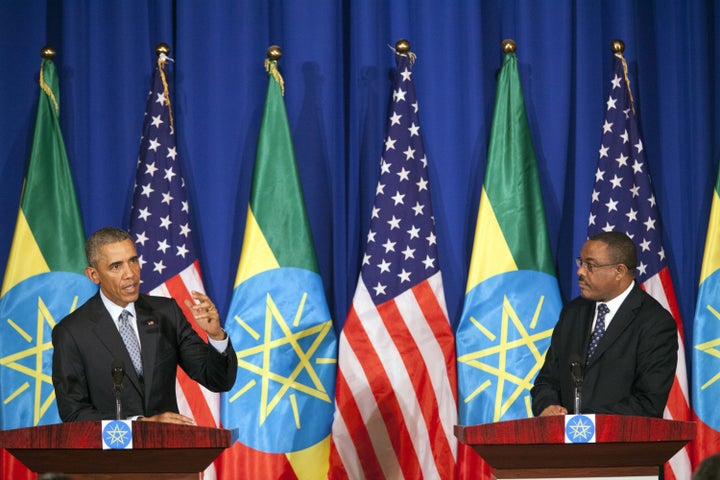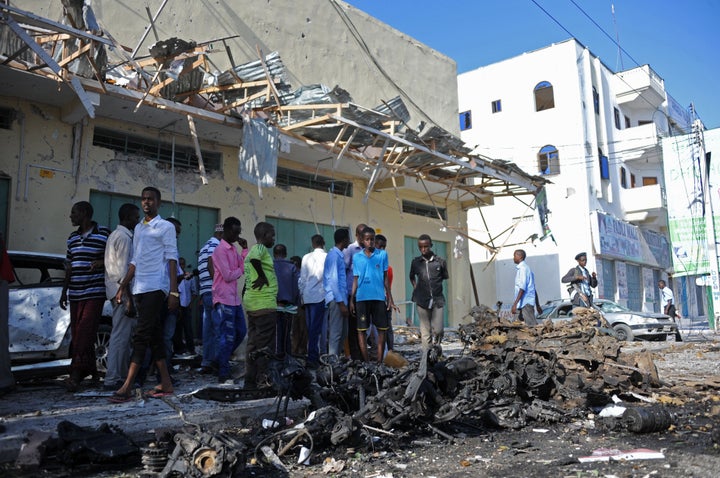
Every week, we bring you one overlooked aspect of stories that made news in recent days. Did you notice the media forgot all about another story's basic facts? Tweet @TheWorldPost or let us know on our Facebook page.
U.S. officials finally confirmed this week that an American drone base in Ethiopia was closed in September, after being used for four years to help gather intelligence on Somalia-based extremist group al-Shabaab.
The revelation comes after news in December that the U.S. military had deactivated a drone squad in neighboring Djibouti.
Some commentators saw the closures as a sign that U.S. drone resources are shifting away from East Africa, specifically the battlefields of Somalia and, a short flight away over the Gulf of Aden, Yemen.
But that doesn’t mean the U.S. drone wars there will end.
The U.S. has a wide network of bases across Africa -- it is still flying drones from Chabelley Airfield in Djibouti, for example. Investigative journalist Nick Turse, who runs the site Tom Dispatch, has counted at least 60 U.S. bases and other facilities across the continent.
“While the U.S. has shifted Predator and Reaper drones away from the Horn of Africa and Arabian Peninsula, this does not mean strikes are going to stop in either place,” Jack Serle, a reporter at the London-based Bureau of Investigative Journalism, told The WorldPost by email. The journalism group, which tracks reports of U.S. drone strikes, said Thursday that reported strikes increased in both Somalia and Yemen last year.

Some Africa experts argued that the U.S. drone program has run its course in Somalia. U.S. drone strikes killed al-Shabaab's leader, Ahmed Godane, in 2014, and possibly also his replacement, Abu Ubaidah, in December 2015. A counter-insurgency campaign backed by U.S. strikes has loosened some of al-Shabaab's territorial hold on South Somalia.
According to J. Peter Pham, director of the Africa Center at the Atlantic Council, these successes show that the U.S. drone program at Arba Minch "has served its purpose."
"Now the question is whether the Somali government is capable of governing this space," Pham said.
Yet the conflict in Somalia is far from over. Somalia's government has been unable to stop the al-Shabaab attacks on the capital, or to follow through on a promise to hold elections.
And the U.S. remains deeply engaged in the Somali conflict, including reportedly establishing bases inside the country. “In Somalia, the U.S. has a much larger presence on the ground than one might think," Serle said. "The U.S. is not going to denude these folks of drone coverage while they're in harm's way.”

U.S. bases in East Africa also have been reportedly used to fly drones over Yemen.
There, reported U.S. drone strikes have targeted al Qaeda's branch in the country -- Al Qaeda in the Arabian Peninsula, or AQAP. Last year, the extremist group consolidated power in the Yemeni city of Mukalla as the country unravelled into civil war, and a coalition led by Saudi Arabia launched airstrikes against the Houthi rebel group. U.S. drone strikes, in turn, were concentrated on Mukalla in 2015, while in previous years they hit targets across the country, according to the Bureau of Investigative Journalism.
"With a smaller area, and an area that is a known AQAP hot spot, perhaps the U.S. won't need as many drones as it did before," Serle said. But with "the current civil war and breakdown of the Yemeni state, the space is there for AQAP to flourish again, which the U.S. would see as a serious threat.”

Meanwhile, other threats are brewing in North Africa and West Africa, as well as in the Middle East, forcing a redistribution of American resources.
“While Yemen and Somalia remain priorities for the U.S., the demands for drones in the rest of Africa, Middle East and Asia mean the U.S. resources are being redeployed and reallocated," Serle said.
In October, shortly after the closure of Arba Minch, President Barack Obama announced that U.S. troops would set up a new drone base in Cameroon to help fight Nigeria-based extremist group Boko Haram.
The U.S. was also looking last summer for a home for a new drone base in North Africa to help monitor the Islamic State's branch in Libya, The Wall Street Journal reported. The Libyan group has emerged as the most powerful affiliate of the extremist organization outside of its Iraqi and Syrian stronghold.
"The timing is not accidental," Pham said of the U.S. redeployment of drone resources. “It’s robbing Peter to pay Paul.”
The shuffling of U.S. drones and drone operators shows "how totally integrated drones are in the U.S. military," Serle said. "In 15 years, they have gone from experimental system to fundamental tool."
More from The WorldPost's Forgotten Fact Series:
- Explosions Hurt More Civilians In Yemen Than In Syria This Year
- Why Burkina Faso's Coup Is A Disaster For Africa
- American Civilians And Veterans Are Fighting ISIS In Syria And Iraq
- Brazil Released Its Own Torture Report And The U.S. Is Implicated
- Russian Airstrikes Cut Off Syrians' Lifeline To Crucial Aid
Also on HuffPost:

